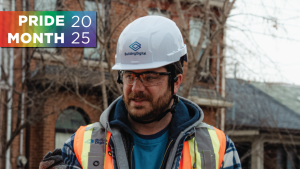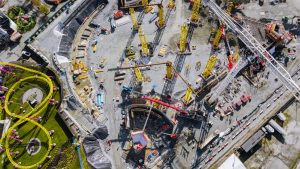Reports of nooses hanging on jobsites are an affront to the construction industry.
“We are disgusted and horrified at this heinous act, which we are treating as a hate crime,” said the Daniels Corporation in a statement after a noose was found at one of its Toronto sites in late June. Nooses have been found on at least two other Toronto work sites, as well as several others across North America.
Hate messages like nooses are one more reason why contractors need to consider 24/7 video surveillance of their worksites.
While the technology is widely available and easy to implement, there are many vendors and options available.
“It can be challenging to determine which cameras provide the features and functionality you need,” says TrueLook Construction Cameras of Winston-Salem, N.C.
It’s important at the outset to consider only equipment and systems designed for the construction industry. That means rugged, fixed-position cameras or those that can pan up to 360 degrees robotically. Cameras for inside work are usually smaller and are powered by 100V batteries, but more advanced weather-proof models can be solar powered if located outdoors.
Imagey around the worksite can be useful for a number of purposes that are positive to the owner-contractor project experience. Integration of video, still or time lapse imagery into BIM platforms permits virtual tours for the benefit of owners, and can provide detailed guidance for MPEC trades and interior space designers. Video systems also allow supervisors to review work in real-time to ensure that both quality and safety measures are being properly addressed without incurring the expense of regular site visits.
The potential efficiency gains made possible with video monitoring are measurable. In a survey conducted by PlanGrid and FMI Corporation, construction leaders indicated that rework caused by miscommunication and poor project data cost the U.S. construction industry more than $30 billion annually.
“Each construction project team member spends more than 14 hours each week on average dealing with conflict, rework and other issues that take away from higher priority activities,” the companies said in a joint release.
The extended periods of construction slowdowns and shutdowns due to the COVID-19 pandemic also make jobsites ripe for theft and vandalism, a factor that has always been important and even more so now due to the recent noose incidents.
Cloud storage of images means surveillance does not require live monitoring by personnel, but can be time-stamped and uploaded 24/7 for review by one or multiple viewers. Motion alerts, night and thermal vision capabilities further enhance monitoring effectiveness. Quality cameras can deliver high-resolution imagery up to 16 MB in colour, uploaded automatically through integrated 4G LTE or WiFi connections.
In the 2016 Equipment Theft Report published by the National Equipment Register and the National Insurance Crime Bureau, annual construction theft in the U.S. alone was estimated to be as much as $1 billion. Most stolen equipment and material is lost forever. Yet, video monitoring can provide both a theft deterrent and solid evidence for authorities leading to possible recovery. The average $30,000 value of a stolen piece of equipment is more than sufficient to cover site monitoring costs.
Time theft further erodes contractor profits.
According to a U.S. survey, the average employee “steals” 4.5 hours each week from their employer, most commonly by a method called “buddy punching” — one employee clocks in another before they actually arrive in order to disguise lateness or absenteeism. It’s a slow-drip theft that can add up to hundreds of dollars each week per employee when left undetected.
The construction industry can ill-afford these losses with margins already low. Video systems are available that can reduce time theft by providing site gateway monitoring to control and verify authorized access by employee, trade or certification.
The nooses on jobsites incidents prove that perimeter fencing or third-party security personnel have limited effectiveness. Given the other multiple benefits of having constant eyes on the site, video surveillance is worth another look.
John Bleasby is a Coldwater, Ont. based freelance writer. Send comments and Inside Innovation column ideas to editor@dailycommercialnews.com.









Recent Comments
comments for this post are closed